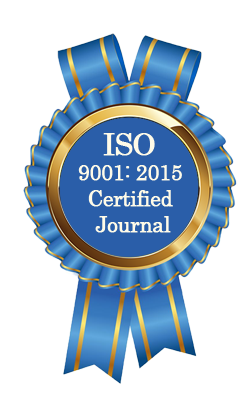| All | Since 2020 | |
| Citation | 105 | 60 |
| h-index | 4 | 4 |
| i10-index | 3 | 2 |
WJAHR Citation 
Login
News & Updation
Best Article Awards
World Journal of Advance Healthcare Research (WJAHR) is giving Best Article Award in every Issue for Best Article and Issue Certificate of Appreciation to the Authors to promote research activity of scholar.
Best Article of current issue
Download Article : Click here
Indexing
Abstract
RISK FACTORS FOR NEONATAL RESPIRATORY DISTRESS SYNDROME – CASE CONTROL STUDY CONDUCTED IN MOSUL-IRAQ
*Muthana Ahmed Azeez, Mohammed Ali Hazim Mohammed Ali and Ziad Khalid Majeed Al Bazza
ABSTRACT
Background: Neonatal respiratory distress syndrome is the most common cause of morbidity and mortality inpreterm newborns. It is diagnosed by grunting, nasal flaring, chest wall retractions, and increased breathing effort,either during delivery or later. Prematurity is the main risk factor for respiratory distress syndrome, however othervariables, such as twin pregnancies, cesarean sections, male gender, and others, may also contribute to thedevelopment of the illness. Antenatal steroids have emerged as a significant obstacle to lung maturation and theprevention of respiratory distress syndrome in premature infants. Objectives: Is to evaluate various risk factorsfor the development of respiratory distress syndrome among newborns attending Neonatal units of Ibin Al Atheerand Al Salam Teaching hospitals in Mosul city. Methods: A case-control study was conducted, from January 2023to the end of December 2023. The study included 60 neonates who were admitted to the neonatal department,diagnosed with respiratory distress disorder (cases) and 60 neonates which collected from the same hospitalsprovided that they had no respiratory manifestations (controls). The questionnaire includes Three parts; part onefor socio-demographic data such as patients’ age, sex, birth weight, gestational age at birth (<37 weeks consideredpremature), Apgar score at 5 min, and mode of delivery. Part two for maternal obstetric history including maternalsmoking and multiple pregnancy. Part three for severity of respiratory distress syndrome. Results: The meangestational age of the study participants was 35.89 ± 3.14 weeks. Of them 77 neonates are males (64.16%) and 43(35.84%) are females, with male to female ratio of 1.79:1. It’s evident that patients of less than 32 weeksgestational age, male gender, born by cesarean section, having low or high birth weight, having maternal historyof smoking, and multiple pregnancy found to have risky association with respiratory distress syndrome.Conclusion: According to the study findings; preterm and post-term delivery, male gender, selective cesareansection, neonates with low 5- minutes Apgar score, low and high birth weight, maternal smoking and multiplepregnancy were risk factors for RDS. These findings have important clinical implications for the diagnosis andtreatment of neonates with RDS.
[Full Text Article] [Download Certificate]
